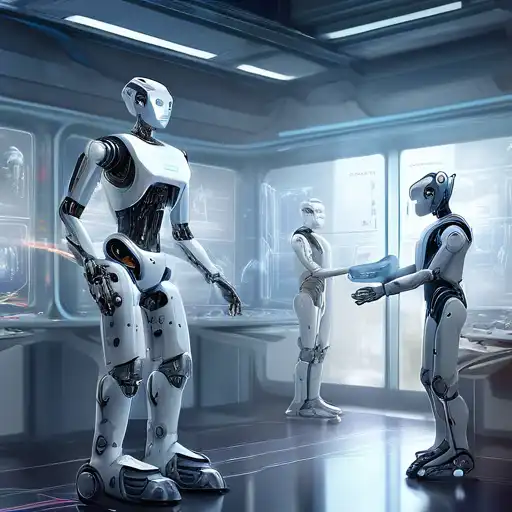The Next Era of Robotics: AI's Transformative Role
The integration of Artificial Intelligence (AI) into robotics is not just an advancement; it's a revolution that's setting the stage for a future where machines can think, learn, and adapt. This fusion is creating smarter, more efficient robots capable of performing complex tasks with minimal human intervention. From manufacturing floors to the depths of space, AI-powered robots are redefining what's possible.
Understanding AI Integration in Robotics
At its core, AI integration in robotics involves embedding machine learning algorithms and cognitive computing capabilities into robotic systems. This enables robots to process information, make decisions, and learn from their experiences in real-time. The result is a new generation of robots that can navigate unpredictable environments, understand human commands, and even exhibit emotional intelligence.
Key Benefits of AI-Powered Robotics
- Enhanced Efficiency: AI enables robots to optimize their operations, reducing waste and increasing productivity.
- Improved Accuracy: With AI, robots can achieve precision levels unattainable by human hands, especially in fields like surgery and micro-manufacturing.
- Adaptability: AI-powered robots can learn from their surroundings and adapt to new tasks without explicit programming.
- Human-Robot Collaboration: AI facilitates safer and more effective collaboration between humans and robots, opening new avenues for teamwork in various sectors.
Real-World Applications
The applications of AI-integrated robotics are vast and varied. In healthcare, robotic surgeons are performing delicate procedures with superhuman precision. In agriculture, autonomous drones and tractors are optimizing crop yields. Meanwhile, in the service industry, robots are delivering personalized customer experiences. The potential is limitless, and we're just scratching the surface.
Challenges and Considerations
Despite the promise, the integration of AI into robotics presents challenges, including ethical concerns, job displacement fears, and the need for robust security measures to prevent misuse. Addressing these issues is crucial for ensuring that the future of robotics benefits all of humanity.
Looking Ahead
The future of robotics, powered by AI, is bright and brimming with possibilities. As technology advances, we can expect to see even more innovative applications that will transform industries, improve lives, and perhaps even redefine what it means to be human. The journey is just beginning, and the potential is boundless.
For more insights into the future of technology, explore our technology trends section.
